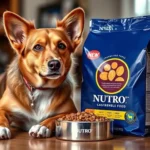
Introduction
Proper nutrition is essential for maintaining the health and well-being of our canine companions. Just like humans, dogs require a balanced diet to thrive, which includes proteins, fats, carbohydrates, vitamins, and minerals. However, some dogs can be notoriously picky eaters, making it a challenge for owners to ensure they get the necessary nutrients. A picky eater in dogs refers to those who refuse to eat certain foods or show selective eating habits that can lead to nutritional deficiencies.
The purpose of this article is to provide strategies and tips for dog owners grappling with the dilemma of a picky dog. By understanding the root causes of picky eating and implementing effective solutions, you can help your furry friend develop healthier eating habits. In this comprehensive guide, we will delve into various aspects of dog nutrition, focusing on how to get a picky dog to eat.
Understanding Picky Eating in Dogs
Common Reasons for Picky Eating
There are several reasons why a dog may exhibit picky eating behaviors. Understanding these can help owners devise strategies to encourage better eating habits.
-
Health Issues: Certain health problems can lead to a reduced appetite. Dental issues, gastrointestinal disorders, or even underlying illnesses can cause discomfort while eating. It’s essential to rule out these health concerns before assuming your dog is just being picky.
-
Behavioral Factors: Dogs can be sensitive to changes in their environment. Stress, anxiety, or changes in routine can affect their eating habits. Additionally, if a dog has been spoiled with table scraps or treats, they may develop preferences for those over their regular food.
-
Dietary Preferences: Just like humans, dogs have their own tastes and preferences. If a dog has been fed a specific type of food for an extended period, they may become reluctant to try new flavors or textures.
Signs of Picky Eating
Identifying whether your dog is a picky eater involves observing their behavior around food. Common signs include:
-
Refusal of Food: Your dog may simply turn away from their bowl or sniff the food without taking a bite.
-
Sniffing but Not Eating: A dog might show interest in their food by sniffing it but will not consume it.
-
Eating Only Certain Types or Brands: Some dogs may only eat specific brands or types of food, ignoring others entirely.
Importance of Proper Nutrition for Dogs
Nutritional Requirements for Dogs
Dogs require a balanced diet that includes the following key nutrients:
- Proteins: Essential for growth, maintenance, and repair of tissues.
- Fats: Provide energy and support cellular function.
- Carbohydrates: Serve as a source of energy and support digestive health.
- Vitamins and Minerals: Crucial for various bodily functions, including immune system support and bone health.
A well-rounded diet ensures that dogs receive the necessary nutrients to maintain their overall health and vitality.
Consequences of Poor Nutrition
Failing to provide proper nutrition can lead to various health risks and behavioral issues. Some potential consequences include:
-
Health Risks: Malnutrition can lead to obesity, chronic diseases, and weakened immune systems. A lack of essential nutrients may also cause developmental issues in puppies.
-
Behavioral Issues: Poor nutrition can manifest in behavioral problems, such as increased anxiety, lethargy, and irritability. A well-fed dog is generally a happier and more balanced pet.
Assessing Your Dog’s Eating Habits
Keeping a Food Diary
Documenting your dog’s eating habits can provide valuable insights into their preferences and behaviors. A food diary allows you to:
- Track what your dog eats, including the types of food and treats offered.
- Note any changes in behavior, health, or appetite.
- Identify patterns, such as specific times of day when your dog is more willing to eat.
Consulting a Veterinarian
If your dog continues to refuse food despite your efforts, it may be time to seek professional advice. Consulting a veterinarian can help you:
- Rule out potential health problems through various screenings and examinations.
- Receive tailored advice on diet changes or nutritional supplements that could benefit your dog.
Strategies to Encourage Eating
Food Variety and Palatability
Introducing variety into your dog’s diet can make mealtime more appealing. Consider the following strategies:
-
New Flavors and Textures: Gradually introduce new flavors and textures to your dog’s meals. This could include trying different proteins (like chicken, beef, or fish) or incorporating various grain or vegetable bases.
-
Mixing Wet and Dry Food: Combining wet and dry food can enhance palatability and provide a mix of textures that some dogs find more appealing.
Meal Presentation
How food is presented can impact a dog’s willingness to eat:
-
Clean Feeding Area: Ensure that your dog’s feeding area is clean and free of distractions. A clutter-free environment can encourage focus during mealtime.
-
Different Bowls or Dishes: Experiment with various bowls or dishes. Some dogs may prefer certain materials, shapes, or colors that seem more appealing to them.
Feeding Schedule and Routine
Establishing a consistent feeding schedule can help regulate your dog’s appetite:
-
Regular Meal Times: Feed your dog at the same times each day. This helps create a routine, making them more likely to eat when food is presented.
-
Avoiding Free Feeding vs. Scheduled Feeding: Free feeding can lead to picky eating habits. Instead, offer food for a limited time, then remove it if not eaten, encouraging your dog to eat when food is available.
Treats and Toppers
Utilizing treats and meal toppers can entice even the pickiest eaters:
-
Healthy Treats: Use small, healthy treats to encourage your dog to eat. Consider offering treats that are high in protein or have appealing flavors.
-
Adding Toppers: Enhance your dog’s meals by adding toppers such as broths, pumpkin, or yogurt. These can make meals more enticing and flavorful.
Behavioral Techniques
Positive Reinforcement
Building positive associations with mealtime can encourage your dog to eat:
-
Praise and Rewards: Use praise and rewards when your dog eats, reinforcing the behavior. This can create a positive connection with their meals.
-
Creating a Positive Association: Make mealtimes enjoyable by spending quality time with your dog during feeding. This can help alleviate any anxiety they may have around food.
Reducing Mealtime Stress
Creating a calm eating environment is crucial for picky eaters:
-
Minimizing Distractions: Ensure that mealtime is free from loud noises, other pets, or distractions that may deter your dog from eating.
-
Calm Eating Environment: Establish a quiet space where your dog can eat comfortably, helping them feel secure and relaxed.
Alternative Feeding Methods
Homemade Dog Food
For those considering a more hands-on approach, homemade dog food can be an option:
-
Benefits and Risks: Homemade diets can provide fresh, high-quality ingredients tailored to your dog’s preferences. However, it’s essential to ensure that these diets are balanced and meet all nutritional requirements.
-
Key Ingredients: Include lean meats, vegetables, and grains while avoiding harmful ingredients such as onions, garlic, and chocolate.
Raw Feeding
Raw feeding, or the BARF (Biologically Appropriate Raw Food) diet, is another alternative:
-
Overview of Raw Diets: This diet consists of raw meats, bones, fruits, and vegetables. Proponents argue that it mirrors a dog’s natural diet.
-
Considerations and Precautions: Raw feeding requires careful planning and sourcing of safe ingredients to prevent health risks, such as bacterial contamination.
Commercial Alternatives
If homemade or raw diets aren’t feasible, consider high-quality commercial dog foods:
-
Evaluating Options: Look for brands that provide high-quality ingredients and are free from fillers and artificial additives.
-
Understanding Labels: Familiarize yourself with reading ingredient labels to ensure that you’re choosing a nutritious food that meets your dog’s dietary needs.
Monitoring Progress
Regular Check-Ins
Keeping track of your dog’s eating habits can help you identify what works best:
-
Tracking Changes: Regularly check in on your dog’s appetite and behavior. Note any positive or negative changes in response to new feeding strategies.
-
Adjusting Strategies: Be flexible and willing to adjust your methods based on what you observe. Each dog is unique, and what works for one may not work for another.
Health Monitoring
Regular veterinary check-ups are vital for maintaining your dog’s health:
-
Importance of Vet Visits: Schedule routine check-ups to monitor your dog’s weight, overall health, and ensure they are receiving the necessary nutrients.
-
Keeping an Eye on Weight: Maintaining a healthy weight is crucial for your dog’s well-being. Regularly assess your dog’s condition and adjust feeding amounts as necessary.
Conclusion
In summary, navigating the world of dog nutrition, particularly with a picky eater, can be challenging but rewarding. Understanding the reasons behind your dog’s selective eating is the first step in addressing the issue. By implementing various strategies such as introducing food variety, establishing a feeding routine, and creating positive associations around mealtime, you can encourage your dog to eat more willingly.
Remember, patience and persistence are key when it comes to changing your dog’s eating habits. A balanced diet is vital for their overall health, and with the right approach, you can help your furry friend develop healthier eating patterns.
By prioritizing your dog’s nutrition, you’re investing in their long-term health and happiness.









